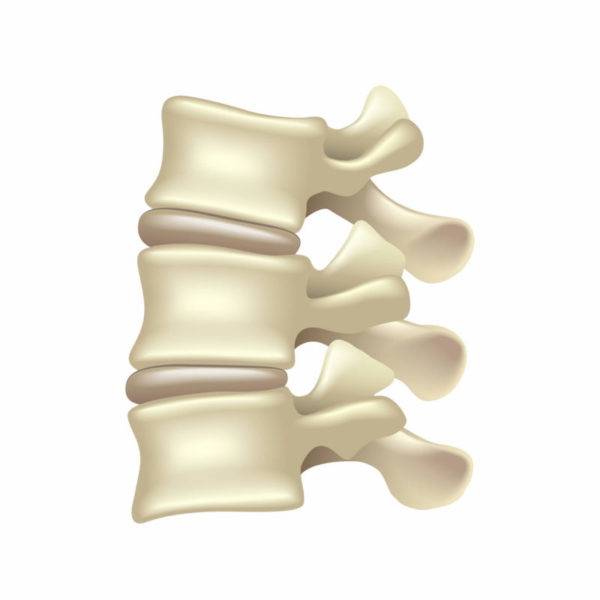Fascinating Facet Joints

A joint is where two or more bones are joined. Facet joints are hinge joints and link the vertebrae bones in your spine together. Your fascinating facet joints are constantly working to support upright, steady posture so you can hold your head up high.
Small bones, vertebrae, are stacked on top of one another and create the spine and three natural curves of your back. The spinal cord extends from the skull to your lower back through the middle of the stacked vertebra. Nerves branch out from the spinal cord through openings in the vertebrae and carry messages between the brain and muscles. Ligaments connect your vertebrae and help keep the spinal column in position and provide support and stability. Flat, round intervertebral disks sit in between the vertebrae and act as shock absorbers for the spine.
Each vertebra has two sets of facet joints with one pair facing up and one facing down on each side of the vertebra. Facet joints are lined with synovial fluid and coated with cartilage to facilitate smooth movement where the two bones meet, including flexion (bending forward), extension (bending backward), and rotation or twisting motion.
The facet joints may develop arthritis and become a source for neck or back pain. The specific symptoms depend on where the affected joint is located and what nerve roots it affects:
- Neck spine pain causes headaches and difficulty moving the head.
- Upper spine pain radiates across the shoulders and upper back.
- Lower back pain sends nerve pain into the buttocks and back of the upper leg.
There are a number of nonsurgical treatment options that are proven to be successful to alleviate pain and keep you moving, such as:
- Rehabilitation with a DOC physical therapist.
- Maintain a normal curvature of the spine with good posture.
- Manage a healthy body weight.
- Hydrate with eight 8-oz. glasses of water daily.
- Eat the USDA recommended 5 to 9 fresh fruits and vegetables every day.
- Relieve painful episodes with heat or cold applications.
- Replace high impact or repetitive activities that cause back pain with low impact workouts.
- Use anti-inflammatory medications when necessary.
- Talk to your DOC surgeon or PA about steroid injections.
Keep your fascinating facet joints in good working order so you can stand up straight with your head held high. The DOC team of surgeons, pain management physicians, PAs, and PTs will discuss comprehensive care options with you, including surgical interventions if conservative care fails.
For more information on the cost of care, click here




